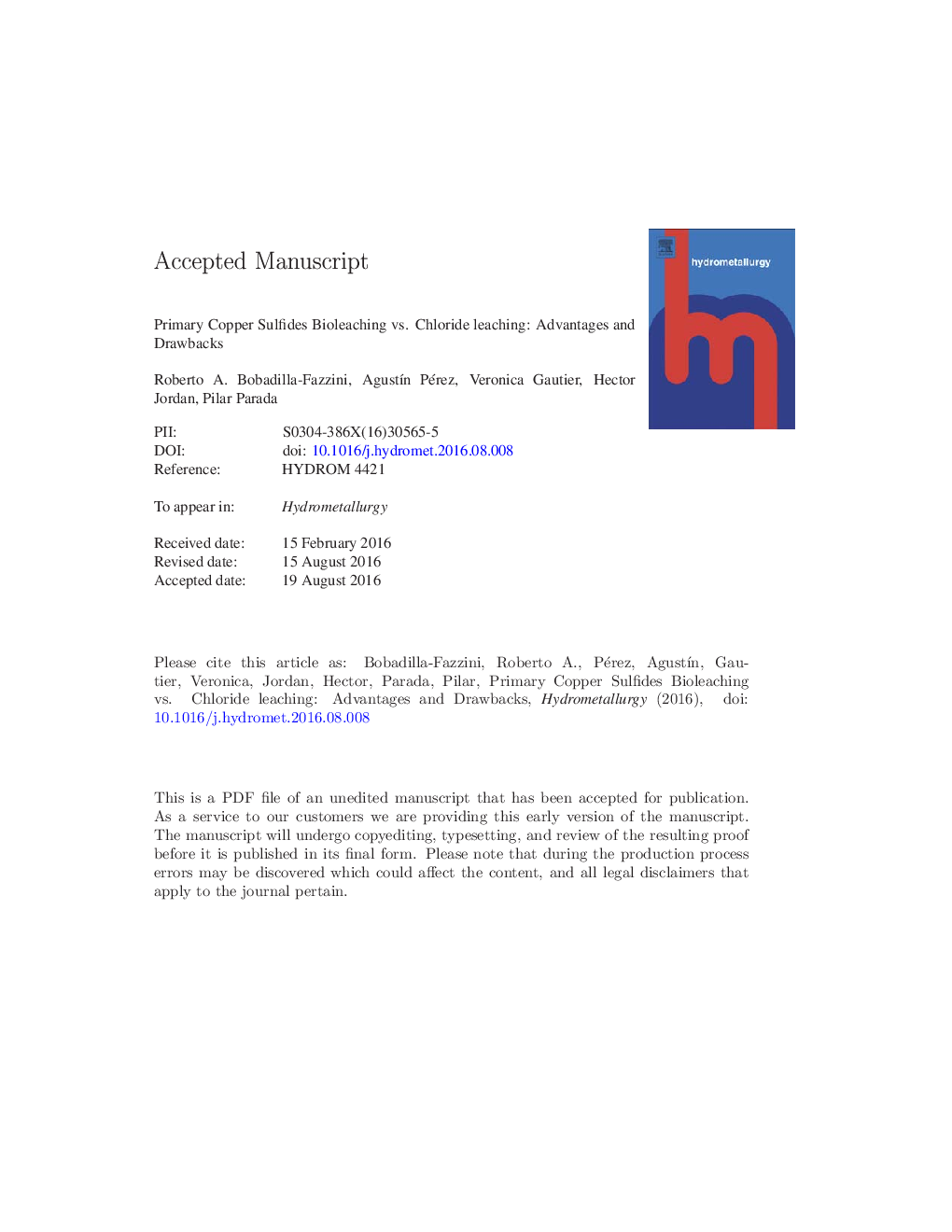| Article ID | Journal | Published Year | Pages | File Type |
|---|---|---|---|---|
| 4769078 | Hydrometallurgy | 2017 | 27 Pages |
Abstract
Currently the vast majority of the world's copper is obtained through sulfide mineral processing. Primary copper sulfides are the most economically relevant due to their abundance. Therefore, several technologies have been developed in order to achieve an efficient copper extraction from these types of copper sulfides. Among these developments, the hydrometallurgical options of bioleaching as well as chemical chloride leaching are prevailing for copper sulfides due to their good results at lab, pilot and industrial scale. However, comparisons are not available among technologies due to differences in scale and mineral/ore used in different studies. In this work, we have compared bioleaching and chemical chloride leaching technologies (including sulfuric acid-sodium chloride ore pre-treatment) for a mainly primary copper sulfide ore. This comparative analysis showed first that bioleaching and chemical chloride leaching work at completely different range of redox potential as expected. Hydrometallurgical iron balances indicated that chloride leaching and bioleaching have comparable iron recovery levels. Copper balances showed that bioleaching is significantly more advantageous than chemical chloride treatments in terms of leaching kinetics and final copper recovery. These advantages were correlated to different primary copper sulfides leaching mechanisms that are taking place during bioleaching. Altogether, these results showed major advantages of bioleaching over chloride chemical leaching for the industrial low-grade primary copper sulfide ores treatment.
Related Topics
Physical Sciences and Engineering
Chemical Engineering
Chemical Engineering (General)
Authors
Roberto A. Bobadilla-Fazzini, AgustÃn Pérez, Veronica Gautier, Hector Jordan, Pilar Parada,
